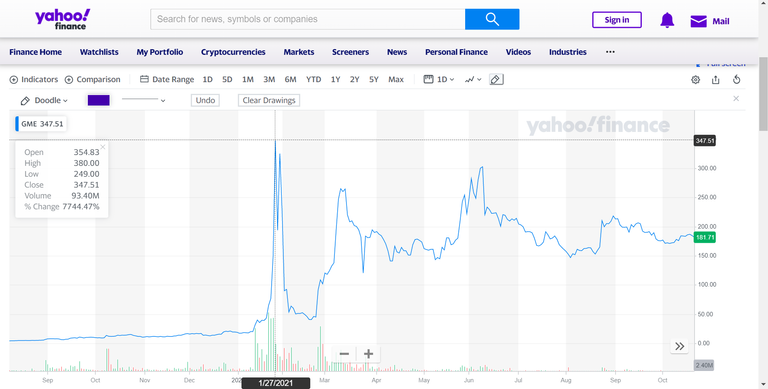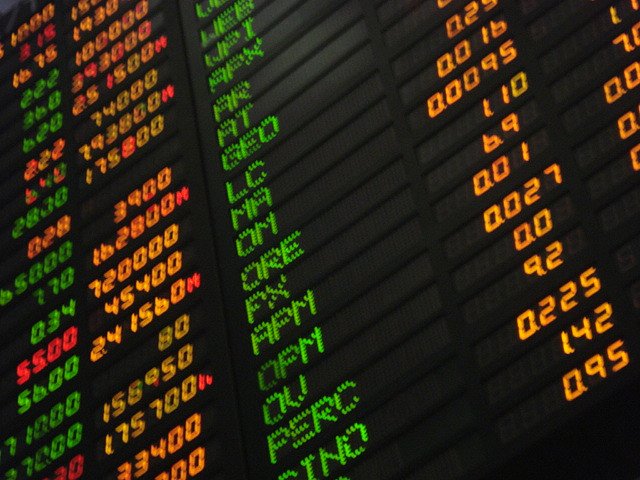Not too long ago, a number of crypto enthusiasts would wonder why anyone would be willing to invest in a boring old blue-chip stock when we can buy Dogecoin or some meme stock and earn up to 400% return on investments in 3 hours? As if it were pleasant music to the ears, and everyone who apes in has the impression that no one is being wounded. The truth is that there is always someone who gets hurt.
When valuations reach the point of boiling over, prices might plummet, causing investors to lose their investments. In the financial markets, these are commonly referred to as "bubbles," which refer to an increase in the price of an asset in a segment of the market that is driven by exuberant behavior. After that, we are left with the question, "What Bubble Will Pop Next?" As a matter of fact, a lot of them are already taking place, as long as investors continue to profit from businesses that are actually losing money, it might be hard to put a stop to them.
Eventually, bubbles burst or at the very least become deflated. Meme stocks, for example, were among the speculative bubbles that burst in 2021, according to Bloomberg.
Gamestop was the company that led the march to record highs in this sector, leaping from $17.25 a share on January 4, 2021 to an all-time high of $347 a share on January 27, 2021 (a nearly 2000% increase! ), exploding Wall Street and its hedge funds in the process.

GameStop all-time high of $347 a share
When the bubble burst in December 2021, Gamestop was down almost 50% from its peak, with retailers and hedgefunds losing millions of dollars as a result.
Another meme stock that got a little too close to the sun was movie theater company AMC Entertainment, which traded at close to $40 a share by the end of December 2021. This represents a decrease of around 40% from the all-time high of $62.55 reached on June 2, 2021.
What began as a joke turned into something more serious when Dogecoin reached a peak of about 74 cents on May 7, 2021, and then plummeted by more than 90 percent by December, 2021.
It is critical to understand that not every increase in the price of an item or stock indicates that the asset or stock is in bubble territory. A good example would be the rise in lumber prices, which is more closely tied to a demand-supply narrative in the real estate market than it is to a classic bubble in the first place. It is at least tangible and can be felt, and its prices have reached a high of $1,670 on May 7, 2021, and are currently trading at roughly $750.
Other bubbles, according to experts, may be on the horizon, but classifying anything as a bubble these days can be difficult. According to GMO, the global growth stocks are currently experiencing the largest possible bubble. It is advised extreme prudence and caution be taken when it comes to the valuations of these "growth companies."

Source: getty images
It is advised extreme prudence and caution be taken when it comes to the valuations of these "growth companies." At the moment, almost a quarter of the US stock market is trading at a multiple of ten times sales, similar to what Amazon did. While the market appears to be pricing each of these "growth companies" as having the potential to be just as successful as Amazon, history however does not support this.
Tesla, the current most valued auto maker in the world, recently crossed the $1 trillion market cap threshold with its stock, reaching an ATH of over $1,200 on November 1, 2021. This high occurred when Hertz revealed that they would be purchasing a number of Tesla vehicles. A rental fleet purchasing vehicles from an auto dealer is generally a low-margin industry, but we've seen Tesla's market capitalization increase by nearly $200 billion in a single week! Seeing such excitement centered around a certain name could be a sign of a bubble about to collapse in the near future. its stocks seem to now trade well beyond its intrinsic worth at this time! The shares of Tesla increased by almost 50% in October 2021 and by around 200 percent in the previous year.
Given the current state of the market with all crypto coins in the dip, Bitcoin is still valued at a couple of trillion dollars, and everything is founded on the assumption that other people would pay for what you have.
In the current market environment, some analysts believe bitcoin is currently in bubble territory. Anyone who is currently invested in Bitcoin is making a bet on the future of the cryptocurrency rather than on what is happening right now. Although well-known investor Michael Burry, who is best renowned for his prediction of the financial crisis, has stated that he is not shorting Bitcoin, he does feel that the cryptocurrency is in a bubble.
Furthermore, commodities have experienced rising prices, which is reminiscent of the timber bubble in its scope and magnitude. Steel is at the top of the list, with prices rising by more than 300 percent from pre-pandemic levels and reaching as high as $1,900 at one time, indicating that the commodity has become a bubble. Steel was selling for between $500 and $800 per ton before the outbreak. There has been a supply shortage, which has kept prices high, but this is reducing and eventually disappearing. When this occurs, we should see a return in the price of commodities, most likely in a violent manner.
However, there is still a heated dispute about whether or not the property market is in a bubble. The house price is multiple family income, which is higher today than it was at the pinnacle of the housing bubble, and which is much higher in countries other than the United States, such as Canada, Australia, England, Hong Kong, Shanghai, and so on. It is a global property bubble, as home values rose at an unprecedented rate during the epidemic, resulting in the median price of an existing home being around $350,000 at the time (13% higher when compared with October, 2020). More rapidly than during the housing boom, home prices are presently rising at a faster rate than they were previously.
So, what is the best way to make money in the bubble?
Currently, there are a plethora of chances available outside of the small little bubble sector of technological innovation disruption, and even cryptocurrencies. I believe that investors in many of the most popular trades have an urgent need to diversify their portfolio. We can perhaps approach it in one of three ways; by exploiting it, dancing around it, or avoiding it.
It is possible to profit from it by employing a long/short strategy to take advantage of this unique occurrence that occurs infrequently. In these circumstances where bubbles occur, there is a great deal of money to be made.
Avoid it by investing in alternatives, such as market neutral strategies such as longs, shorts, and other long-short strategies in equities, bonds, commodities, and currencies, There are a few classic equities that appear to be undervalued, however they are rare and a little difficult to find. In addition, we can give these a chance!
Investors should focus on value-oriented names in companies that are potentially cheaper than the way the market is running right now . Experts believe that these organizations will be able to withstand the test of time and will be able to cope with an increase in interest rates. There are areas in finance and even healthcare where this is true (a good example being United Health).
Bubbles will continue to happen. It’s part of the way we operate. As long as they present opportunities and a herd mentality exists, then the shift happens. And for folks who are the last to arrive at a party, they are the ones who really feel the pain. It is an unfortunate reality, but I guess that is how the world of finance works and what we all do as investors.
